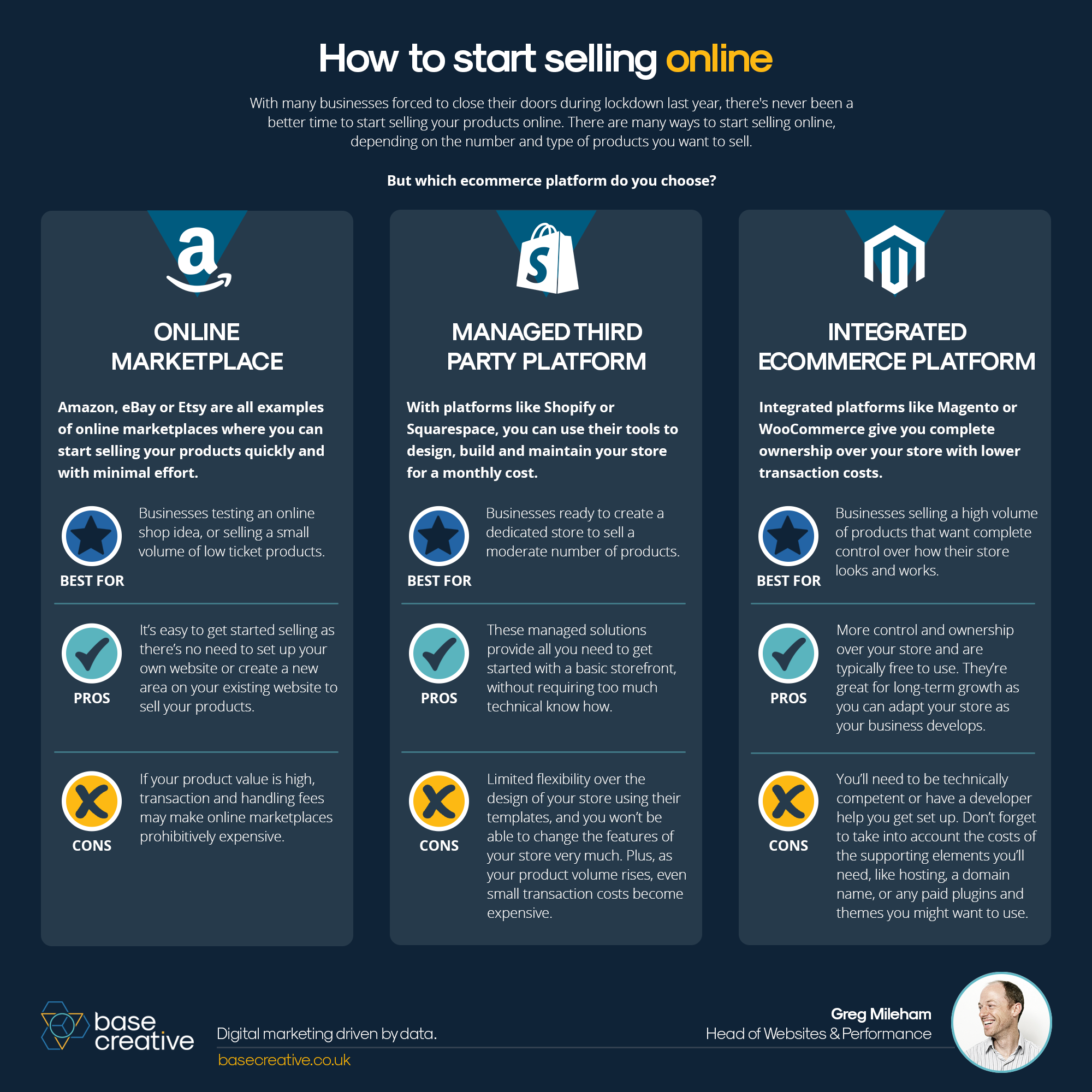TABLE OF CONTENTS
TABLE OF CONTENTS
Other Usefull Contents
You can see many success stories from our customers, and you may be one of them in the future
Unlock the Power of Mobile Commerce: Propel Your Business Forward
Read MoreDiscover how to harness mobile commerce to enhance your business growth. Learn strategies for optimizing the mobile shopping experience and increasing consumer engagement.
Read MoreDiscover the benefits of mobile commerce and how it can transform your business. Learn effective strategies for maximizing sales and customer engagement through mobile-optimized shopping experiences.
Read More














Although the explosion of e-commerce led to a series of e-commerce websites being born to serve the online shopping needs of users. However, the e-commerce website has a few inconvenient aspects that make customers unhappy. It is also for this reason that businesses plan to develop mobile e-commerce applications aimed at improving customer experience.
However, not as simple as building an e-commerce website, developing an e-commerce app is much more complicated. In this article, we'll guide you through the steps required to build an e-commerce mobile app, including defining your goals and target audience, conducting a market analysis, choosing a development platform, designing your user interface, developing the back-end infrastructure, implementing security measures, testing and launching your app and promoting and maintaining your app.
What is an e-commerce mobile app?
An e-commerce mobile app is a software application designed specifically for mobile devices, such as smartphones and tablets, to facilitate online shopping. It provides users with a convenient platform to browse products, make purchases, track orders, and engage with the brand. E-commerce mobile apps combine the power of mobile technology, user-friendly interfaces, and secure payment gateways to create a personalized and immersive shopping experience.
You may also be interested in:
E-commerce Mobile App Development - The Lastest Guide
Why do we need an e-commerce mobile app?
Having an e-commerce mobile app offers several advantages for both businesses and customers. Let's explore three key reasons:
The impact of events like the COVID-19 pandemic has significantly influenced consumer behavior. More people are shifting towards online shopping, with a significant increase in mobile usage. By having an e-commerce mobile app, you can tap into this growing market and cater to the changing needs and preferences of customers.
How To Create An E-commerce Mobile App
Step 1: Defining requirements
Before diving into the development process, it's crucial to define the requirements of your e-commerce mobile app. This step lays the foundation for a successful app development project. Consider the following tasks:
App Goals and Objectives
Clearly define the goals and objectives of your app. Determine the primary purpose, target audience, and desired outcomes. This will help guide the development process and ensure the app aligns with your business objectives.
Essential Features of an E-commerce App
Identify the must-have features for your e-commerce app. These may include product catalog, search functionality, shopping cart, secure payment gateway, order tracking, and user reviews. Prioritize features based on their importance and impact on the user experience.
User Expectations and Market Trends
Understand user expectations and market trends in the e-commerce industry. Research customer preferences, behavior, and emerging technologies to stay ahead of the competition. Incorporate features and functionalities that resonate with your target audience.
Step 2: Platform selection
Choosing the right platform for your e-commerce mobile app is a critical decision that impacts its performance, scalability, and development process. Consider the following factors:
Native vs. Cross-platform
Decide whether you want to develop a native app (specific to a particular platform) or a cross-platform app (compatible with multiple platforms). Native apps offer better performance and access to platform-specific features, while cross-platform apps provide cost and time efficiency.
Choosing the Right Platform
Evaluate the pros and cons of different platforms such as iOS, Android, and the web. Consider factors like user base, market share, and your target audience's device preferences. Select the platform(s) that best align with your business goals and target audience.
React Native and Flutter Frameworks
Explore frameworks like React Native and Flutter that enable cross-platform app development. These frameworks offer code reusability, faster development cycles, and a native-like user experience. Evaluate their features, community support, and suitability for your project.
Step 3: Wireframing and prototyping
Wireframing and prototyping play a vital role in visualizing the app's structure and flow, allowing you to iterate and refine the user experience. Consider the following tasks:
Source: MockFlow
Importance of Visualizing App Structure and Flow
Create wireframes to outline the layout, navigation, and interaction flow of your app. Visualize how users will navigate through screens, access features, and perform actions. This helps identify potential usability issues and improve the overall user experience.
Tools and Techniques for Creating Wireframes
Utilize wireframing tools such as Sketch, Adobe XD, or Figma to design low-fidelity representations of your app's screens and components. These tools provide prebuilt UI elements and allow for easy collaboration and iteration.
Creating Prototypes for User Testing
Convert wireframes into interactive prototypes that simulate the app's functionality. Use prototyping tools like InVision or Marvel to create clickable prototypes. Conduct user testing sessions to gather feedback, identify pain points, and refine the app's design and user flow.
If you want to understand more about wireframes and prototypes, please refer to the video below.
Step 4: User interface design
The user interface (UI) design of your e-commerce mobile app significantly impacts user engagement and satisfaction. Focus on creating an intuitive, visually appealing, and consistent interface. Consider the following tasks:
Principles of Effective UI Design
Follow UI design principles such as simplicity, clarity, and consistency. Design intuitive navigation, clear call-to-action buttons, and visually appealing elements. Ensure that the design elements align with your brand's identity and create a cohesive user experience.
Selecting Appropriate Color Schemes and Typography
Choose colors that evoke the right emotions and resonate with your brand. Use typography that enhances readability and complements the overall design. Consider accessibility guidelines to ensure your app is usable by all users.
Branding and Consistent Visual Elements
Incorporate your brand's visual elements such as logos, icons, and imagery consistently throughout the app. Maintain a cohesive visual identity that aligns with your website or other marketing channels.
Step 5: Development process
The development process is where your e-commerce mobile app starts taking shape. It involves frontend and backend development, as well as connecting the two components seamlessly. Consider the following tasks:
1. Frontend Development:
Building Product Catalog and Search Functionality: Develop a robust product catalog that allows users to browse and search for products efficiently. Implement search filters, sorting options, and intuitive navigation to enhance the user experience.
Implementing a Shopping Cart and Checkout Process: Create a seamless shopping cart feature that enables users to add products, modify quantities, and proceed to the checkout process effortlessly. Ensure a secure and user-friendly checkout flow, including address selection, payment options, and order summary.
2. Backend Development:
Setting Up a Database for Product and User Management: Design and implement a database system to store product information, user data, and order details securely. Optimize database performance to handle a large number of transactions and ensure data integrity.
Integration of a Secure Payment Gateway: Integrate a reliable and secure payment gateway that supports various payment methods. Implement encryption and other security measures to protect sensitive customer information during transactions.
3. Connecting Frontend and Backend Components:
Establish communication between the frontend and backend components of your app. Use APIs (Application Programming Interfaces) to enable data exchange and ensure smooth interaction between different parts of the app. Test and debug the integration to ensure seamless functionality.
Step 6: Payment Integration
The payment integration step focuses on incorporating secure and reliable payment gateways into your e-commerce mobile app. Consider the following tasks:
Select Secure and Reliable Payment Gateways
Research and choose reputable payment gateways that offer secure and seamless payment processing. Consider factors such as transaction fees, supported currencies, fraud protection measures, and ease of integration.
Integrating into the App
Follow the payment gateway provider's documentation and APIs to integrate the chosen payment gateway into your app. Implement the necessary code and configuration to enable payment transactions within the app.
Testing the Payment Flow
Conduct thorough testing of the payment flow to ensure a smooth and error-free experience for users. Test various scenarios, including successful payments, failed payments, and refund processes. Monitor and handle any potential errors or exceptions during the payment process.
Step 7: Testing and Quality Assurance
Testing and quality assurance are crucial to ensure your e-commerce mobile app functions as intended and delivers a seamless user experience. Consider the following tasks:
Conduct Comprehensive Testing
Perform various types of testing, including functional testing, usability testing, performance testing, and compatibility testing. Test each feature, functionality, and user flow within the app to identify and address any issues or bugs.
Testing Each Feature, Functionality, and User Flow
Test the product catalog, search functionality, shopping cart, checkout process, order tracking, and other critical features. Verify that the app works correctly across different devices, screen sizes, and operating systems.
Step 8: Deployment and Publishing
After successfully developing and testing your e-commerce mobile app, it's time to deploy and publish it to the app stores. Consider the following tasks:
Creating Developer Accounts for App Stores
Register for developer accounts on the Apple App Store and Google Play Store. Follow the respective guidelines and requirements to set up your accounts and gain access to the app distribution platforms.
Guidelines for Submission and Review Process
Familiarize yourself with the submission guidelines and review process of each app store. Ensure your app complies with its policies regarding content, functionality, and user experience. Address any feedback or issues raised during the review process promptly.
Deploying the App to the Apple App Store and Google Play Store
Prepare the necessary app assets, such as app icons, screenshots, and descriptions, according to the app store requirements. Package your app for submission and follow the specific submission processes for each platform. Monitor the progress of the app review and address any necessary modifications or updates.
Step 9: Marketing and Promotion
Once your e-commerce mobile app is available on the app stores, it's crucial to implement effective marketing and promotion strategies to attract users and drive app downloads. Consider the following tasks:
Developing a Marketing Strategy
Define your target audience and create a comprehensive marketing plan. Utilize various channels, including social media, email marketing, content marketing, and paid advertising, to reach and engage potential users. Highlight the unique selling points of your app and offer incentives to encourage downloads.
Utilizing Social Media and Other Channels
Leverage social media platforms to create brand awareness, engage with your audience, and promote app features and updates. Explore partnerships with influencers or industry-related websites to expand your app's reach. Consider implementing referral programs or loyalty programs to incentivize user engagement and referrals.
Encouraging User Reviews and Ratings
Actively encourage users to leave reviews and ratings for your app on the app stores. Positive reviews and high ratings can significantly influence other potential users' decisions to download your app. Respond promptly to user feedback, address any issues raised, and continuously improve your app based on user suggestions.
Step 10: Monitoring, Optimization, and Maintenance
Launching your e-commerce mobile app is not the end of the journey. Continuously monitoring, optimizing, and maintaining your app is essential for long-term success. Consider the following tasks:
Analyzing User Feedback and App Analytics
Regularly monitor user feedback, reviews, and ratings to identify areas for improvement. Utilize app analytics tools to gain insights into user behavior, app usage patterns, and conversion rates. Use this data to make data-driven decisions and prioritize feature updates or bug fixes.
Making Updates and Improvements Based on Data
Actively iterate and enhance your app based on user feedback and analytics. Release regular updates to address bugs, introduce new features, and optimize performance. Stay informed about emerging trends and technologies in e-commerce app development to stay ahead of the competition.
Continuous Optimization for Enhanced User Experience
Optimize the app's performance, speed, and user interface to ensure a seamless and enjoyable experience for users. Regularly test the app on different devices and operating systems to maintain compatibility and address any compatibility issues that may arise.
Tips for Building an E-commerce Mobile App
Building an e-commerce mobile app requires careful consideration and attention to detail. Here are some additional tips to enhance your app development process:
Focus on User Experience
Prioritize creating a seamless and intuitive user experience. Optimize app navigation, minimize steps for completing actions, and ensure smooth transitions between screens. Incorporate user feedback and conduct usability testing to identify and address any usability issues.
Optimize Performance
Efficient performance is crucial for a successful e-commerce app. Optimize loading times, minimize app size, and utilize caching techniques to enhance speed. Regularly monitor and optimize server response times to ensure quick and reliable data retrieval.
Ensure Security
Security is paramount when handling sensitive user data. Implement robust security measures, such as secure authentication methods, data encryption, and secure payment gateways. Regularly update your app's security protocols to stay protected against emerging threats.
Implement Analytics
Leverage analytics tools to gain insights into user behavior, app usage patterns, and conversion rates. Analyze data to understand user preferences, identify areas for improvement, and make data-driven decisions for app enhancements and marketing strategies.
Offer Personalization
Enhance user engagement by incorporating personalized experiences. Utilize user data to provide tailored product recommendations, personalized promotions, and customized notifications based on user preferences and past interactions.
Support Multiple Payment Methods
Offer a variety of secure and convenient payment options to cater to user preferences. Support popular payment gateways, such as credit cards, mobile wallets, and digital payment platforms, to provide a seamless checkout experience.
Platforms for Building an E-commerce Mobile App
Choosing the right platform for building your e-commerce mobile app is essential. Here are some popular platforms to consider:
Shopify
Shopify is a robust e-commerce platform that offers mobile app development capabilities. It provides a comprehensive suite of tools for building, managing, and scaling your online store. With its user-friendly interface and extensive app ecosystem, Shopify allows for the seamless integration of mobile apps with your e-commerce website.
Pros:
Cons:
WooCommerce
WooCommerce is a flexible and customizable e-commerce plugin for WordPress. It offers various mobile app development options, including third-party integrations and extensions. With its vast range of themes and plugins, WooCommerce enables you to create a fully functional and visually appealing mobile app.
Pros:
Cons:
Magento
Magento is a popular open-source e-commerce platform known for its scalability and flexibility. It offers a wide range of features and functionalities for building mobile apps, including responsive design, secure payment gateways, and inventory management. Magento allows for seamless integration with third-party extensions and offers extensive customization options.
Pros:
Cons:
Bigcommerce
Bigcommerce is a comprehensive e-commerce platform that provides mobile app development capabilities. It offers a user-friendly interface, advanced SEO features, and a wide range of integrations. Bigcommerce allows you to create a mobile app that aligns with your brand and delivers a seamless shopping experience for your customers.
Pros:
Cons:
Unleash the Power of Mobile Commerce with CMSmart
Building an e-commerce mobile app is a complex and challenging task, but it can be highly rewarding. By following these steps, you can create an app that meets the needs and preferences of your target audience and helps your business grow.
Maximize your business's potential and capitalize on the booming mobile market with CMSmart, the trusted partner for building exceptional e-commerce mobile apps.
With a wealth of industry expertise and a proven track record, CMSmart has enabled numerous businesses to establish a successful mobile presence. Our team of experienced professionals combines technical prowess with a deep understanding of e-commerce trends, guaranteeing you a seamless and efficient app development journey.
At CMSmart, we take immense pride in our strong reputation and unwavering commitment to delivering top-notch solutions. As a trusted market leader, we have earned the trust of countless satisfied clients worldwide. Our extensive portfolio showcases the remarkable success stories we have co-created, driving businesses toward unprecedented growth, increased revenue, and enhanced customer engagement.
When choosing CMSmart as your partner, you receive more than just an app development service. We recognize the uniqueness of your brand and work closely with you to capture its essence within your mobile app. Our user-centric approach, captivating designs, and flawless functionality combine to create an extraordinary user experience, ensuring your customers keep coming back for more.
Regardless of your business's location, CMSmart is here to support you every step of the way. With a global clientele in mind, we provide localized assistance tailored to your specific market needs. From initial concept to ongoing maintenance, our dedicated team ensures your e-commerce mobile app remains cutting-edge and in sync with the ever-evolving industry landscape.
Technology never stands still, and neither does CMSmart. We constantly stay ahead of the curve by employing the latest tools and frameworks to build future-proof and scalable e-commerce mobile apps. With our solutions, your app will effortlessly adapt to changing customer demands, emerging platforms, and evolving market dynamics, empowering your business to thrive in the digital age.
Don't miss out on the immense potential of mobile commerce. Join forces with CMSmart, the industry-leading provider of e-commerce mobile app development. Trust our experience, leverage our credibility, and let us propel your business to new heights of success. Contact us now to embark on an extraordinary mobile journey!